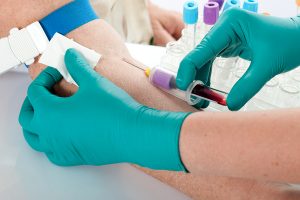A research team in Australia and Japan has developed a new Alzheimer’s blood test. It detects circulating amyloid beta, a toxic protein known to be responsible for the development of Alzheimer’s disease. A research team from Cambridge University has recently done research with the tau protein. It seems that the precursor of tau protein is amyloid beta, which does not damage memory on its own. Most of all, tau protein is visible through a PET scanner. In addition, other research has shown that the tau protein is damaging the memory center in Alzheimer’s patients. Furthermore, research has also shown that sugar over consumption is leading to more amyloid beta in the brain.
Correlation between blood test and amyloid beta deposit in the brain
Finally, there appears to be a correlation between the amounts of amyloid beta protein deposited in the brain and circulating amyloid beta in the blood. Most noteworthy, an Australian and Japanese team correlated blood levels of amyloid beta with amyloid deposits in Alzheimer’s brains. It seems like there was an accuracy of about 90% when they tested this correlation in Alzheimer’s patients. The publication of the results was in a letter to Springer Nature (see link).
Details about the trial
The research involved 121 patients from Japan and 252 from Australia with varying degrees of Alzheimer’s disease. While there are publications about similar blood tests, these investigators found a specificity and sensitivity of 86%. The newer methods of testing amyloid beta were possible by combining immunoprecipitation with mass spectrometry. As a result the blood test is more accurate.
Treatment of Alzheimer’s disease not effective
Although there are three different drugs on the market for Alzheimer’s disease none of them are effective. Colin Masters, professor of dementia research at Melbourne’s Florey Institute of Neuroscience and Mental Health led the study. He said: “Progress in developing new therapeutic strategies for Alzheimer’s disease has been disappointingly slow. None of the three drugs currently on the market treat the underlying disease”.
Conclusion
Australian and Japanese teams have developed a more sensitive new blood test for Alzheimer’s disease. It is likely that this test will enter the clinical scene in the next few years. It will be useful to have a simple blood test, which indicates whether or not a patient has a risk of developing Alzheimer’s disease. But the problem remains that there is no effective medication to reduce amyloid beta in the brain. More research is necessary to solve that problem. Tests can determine the risk, but there is neither a treatment nor a cure.







